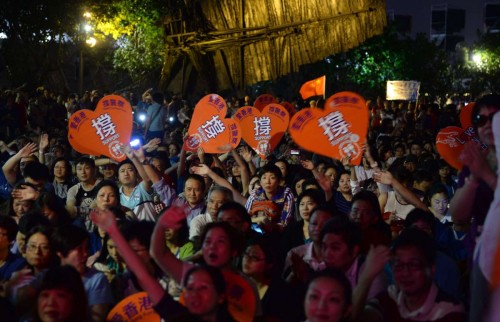Isabel Fueyo spent a month at the epicentre of Hong Kong’s pro-democracy movement

A month after the pro-democracy movement of Hong Kong began with the peaceful occupation of city streets, the daily life of one of the areas has been enriched by the ingenuity of protesters who have converted the area into a self-sustaining settlement.
This “village” is located in the financial heart of the city at the gates of the main offices of the local government in the Admiralty district. It is governed neither by mayors nor district heads and does not have any police or security guards, only dozens of students and volunteers who take turns to ensure that nothing is lacking, or almost nothing.
Among the hundreds of tents where demonstrators spend the night, every 100 yards one can see a stall offering food, medical aid, private classes and even psychological counseling.
“At first, the nights were a bit hard, we woke up at the slightest sound, believing that they had come to clear us off, but by the end of the week we could sleep soundly,” said Lilian, a nurse from Hong Kong who is volunteering here in her free time.
“This is what we call our village, we have been growing with the passing of each day and adapting our environment to our needs,” said Jamie Hou, a student.
There are dozens of tables and chairs made from construction material waste to enable students, who constitute the bulk of the protesters, to prepare their lessons even as they continue their demonstrations. Almost every day, volunteers and carpenters help to extend this study area which has lights and an internet connection, and where it is forbidden to take photos with a flash so as not to distract the students.
Several volunteers offer classes of mathematics, English and law.
Lilian attends to a middle-aged woman who approaches her to ask for a tent to spend the night, noting down her name and telephone number.
“This way we have control over how many tents are erected every night, because everybody comes in the morning to return them.”
The occupied zone does not need any money as all the material, food and supplies are donated by people, associations or companies supporting the movement.
“Two weeks ago, an anonymous donor gave us more than a 100 tents,” Lilian says.
Less than 10 metres from the gates of the parliament, the students have set up a working library with books organised in wooden shelves and a counter to attend to reader requests.
Further along, a makeshift room created from plastic and bamboo scaffolding serves as a shower.
The public baths in the area are full of hygiene and beauty products, and dozens of tubes of toothpaste, soaps, body creams, and perfumes.
“All this has been brought by the people and all make responsible use of it,” explains Lilian.
It is the same with food. Every day volunteers appear with supplies for breakfast, lunch or dinner for those who wish to eat something more substantial than the packaged food flooding the food stalls.
In a corner, almost in front of the “headquarters” from where the protests are being conducted, is the area for psychological counseling.
“Most of the people who come here are parents of students who are concerned about how the protests could affect their children’s studies,” explains Hou.
There is a designated smoking zone catering to smokers and all this amid dozens of art works which have turned the occupied area into galleries on the streets.
In short, the “village” lacks nothing except one thing, says Lilian: “Genuine democracy.”